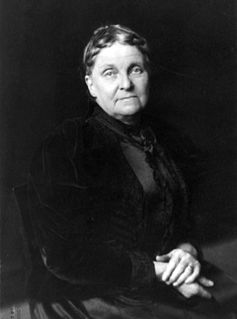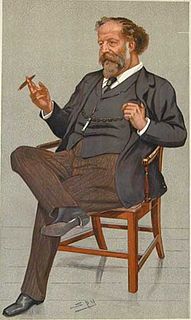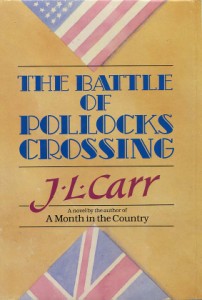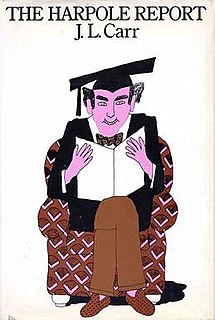
The quince is the sole member of the genus Cydonia in the family Rosaceae. It is a deciduous tree that bears a pome fruit, similar in appearance to a pear, and bright golden-yellow when mature. Throughout history the cooked fruit has been used as food, but the tree is also grown for its attractive pale pink blossoms and other ornamental qualities.

Hetty Green, nicknamed the "Witch of Wall Street", was an American businesswoman and financier known as "the richest woman in America" during the Gilded Age. Known for both her wealth and her miserliness, she was the lone woman to amass a fortune as a financier when other major financiers were men.
Joseph Lloyd Carr, who called himself "Jim" or even "James", was an English novelist, publisher, teacher, and eccentric.

Conrad Michael Richter was an American novelist whose lyrical work is concerned largely with life on the American frontier in various periods. His novel The Town (1950), the last story of his trilogy The Awakening Land about the Ohio frontier, won the 1951 Pulitzer Prize for Fiction. His novel The Waters of Kronos won the 1961 National Book Award for Fiction. Two collections of short stories were published posthumously during the 20th century, and several of his novels have been reissued during the 21st century by academic presses.

A Month in the Country is the fifth novel by J. L. Carr, first published in 1980 and nominated for the Booker Prize. The book won the Guardian Fiction Prize in 1980.

Adam Bede, the first novel written by George Eliot, was published in 1859. It was published pseudonymously, even though Evans was a well-published and highly respected scholar of her time. The novel has remained in print ever since and is used in university studies of 19th-century English literature.

The Deerslayer, or The First War-Path (1841) was the last of James Fenimore Cooper's Leatherstocking Tales to be written. Its 1740-1745 time period makes it the first installment chronologically and in the lifetime of the hero of the Leatherstocking tales, Natty Bumppo. The novel's setting on Otsego Lake in central, upstate New York, is the same as that of The Pioneers, the first of the Leatherstocking Tales to be published (1823). The Deerslayer is considered to be the prequel to the rest of the series. Fenimore Cooper begins his work by relating the astonishing advance of civilization in New York State, which is the setting of four of his five Leatherstocking Tales.
Charles Henry Harpole, Ph.D., is a scholar of cinema and mass communications and a filmmaker. He received his doctorate from New York University and has taught at the University of Georgia, New York University, the New School, Southern Illinois University, the University of Texas at Dallas, Ohio State University, the University of Central Florida, and Mahidol University.

The Bondwoman's Narrative is a novel by Hannah Crafts, a self-proclaimed slave who escaped from North Carolina. She likely wrote the novel in the mid-19th century. The manuscript was authenticated and published in 2002. Scholars believe that the novel, possibly the first written by an African-American woman, was created between 1853 and 1861. It is the only known novel by a fugitive slave woman, and it may precede the novel Our Nig by Harriet Wilson, published in 1859.
The Old Timers is a rare, privately printed book published in 1957 by the school teacher, map-maker, publisher and author J. L. Carr during his second visit to teach at a public school in Huron, South Dakota, United States.

Joseph William Comyns Carr was an English drama and art critic, gallery director, author, poet, playwright and theatre manager.

The Battle of Pollocks Crossing is the sixth novel by J.L. Carr, published in 1985. The novel was shortlisted for the Booker Prize in 1985 and followed a nomination in 1980 for A Month in the Country, his preceding novel.

A Day in Summer is the first novel by J. L. Carr, published in 1963. The story is set in the fictional village of Great Minden on the day of its annual Feast where RAF veteran Peplow arrives to seek retribution for the death of his son.

How Steeple Sinderby Wanderers Won the F.A. Cup is the fourth novel by J. L. Carr, published in 1975. The novel is a comic fantasy that describes in the form of an official history how a village football club progressed through the FA Cup to beat Glasgow Rangers F.C. in the final at Wembley Stadium.
Redheap is a novel by Norman Lindsay. It is a story of life in a country town in Victoria, Australia in the 1890s. Lindsay portrays real characters struggling with the social restrictions of the day. Snobbery and wowserism are dominant themes. In 1930 it became the first Australian novel to be banned in Australia.
Christopher Fiddes is an English artist, designer of stained glass and book illustrator.














